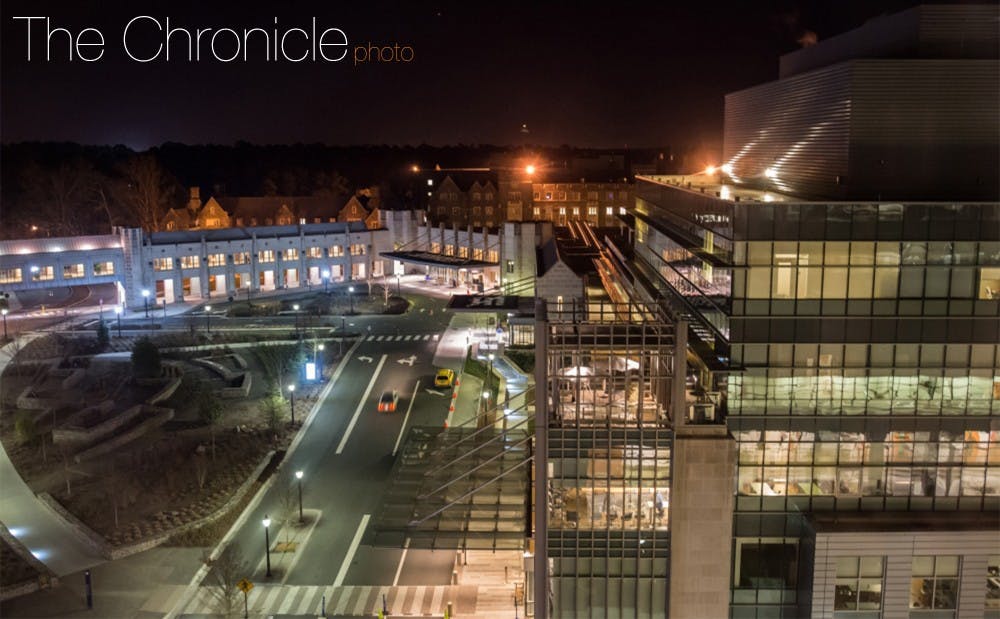It may not be a coincidence that Dr. Robert Lefkowitz and Paul Modrich, the two Nobel laureates at Duke, are both Howard Hughes Medical Institute investigators.
The HHMI investigator program serves to identify individual talent in biomedical fields and provide these scientists with a salary as well as long-term, flexible research funding to pursue multiple projects. Currently, the list of 324 HHMI investigators includes 25 Nobel laureates and 182 members of the National Academy of Sciences—both among the highest forms of distinction in science. Currently six Duke faculty are HHMI investigators. Through its support of researchers, the program maintains a mutually beneficial relationship with Duke and other primary research institutions that host HHMI investigators.
“This program is unique in that it funds people, not projects,” said Lefkowitz, James B. Duke professor of biochemistry and the winner of the 2012 Nobel Prize Chemistry. “The funding is often very generous—several times higher than a typical [National Institute of Health] RO1 grant—and it gives you tremendous freedom.”
Dr. Vann Bennett—James B. Duke Professor of cell biology who has been an HHMI investigator for almost 30 years—also noted the program’s great flexibility. He explained that this is unseen in other funding agencies and granting institutions, such as the National Institute of Health.
“Compared to HHMI, the National Institute of Health is a very localized interest group,” Bennett said.
For instance, Bennett explained that because his work on proteins spanning cellular plasma membranes has crossed the disciplines of hematology, neuroscience and cardiology at different stages of the research, he would have had to apply to for several grants from different sections of the NIH if he had not received support from HHMI.
“Providing this sort of research funding is remarkable in this day and age,” said Philip Benfey, Paul Kramer professor of biology who received an HHMI appointment in 2011. “The funding is longer-term, with no-strings attached. [The program] allows scientists to be productive and liberated from short-term goals.”
Every year, HHMI selects around 25 investigators in the nation to offer support. Since the launch of Howard Hughes Medical Institute Investigator program, the Duke University Health System has had 24 faculty members funded by HHMI while the University has had 21 funded faculty members—including the two standing Nobel laureates, Lefkowitz and Modrich.
Bennett explained that the initial selection of HHMI investigators features a national competition—usually including a few thousands applicants.
“You start with 2,000 applicants, and by the end of the process maybe 30 might be selected—and they are likely to be pretty good,” Bennett said.
Lefkowitz noted though that approximately 40 years ago, when he first became a HHMI investigator, only eight researchers nationwide received the title. Compared to the 300 HHMI investigators currently in the program, he said there were only 50 scientists back in his day.
“They have always picked the best people,” Lefkowitz said. “In 1976, I was the only one of the eight investigators from Duke. Six of the eight of us would go on to be appointed to the National Academy of Science.”
However, Lefkowitz—who has been a HHMI investigator since 1976—noted that with tremendous freedom also comes significant accountability. Every five years, an HHMI investigator must undergo a competitive review, which determines if his or her appointment will be renewed, Lefkowitz explained.
Research institutions and HHMI have a mutually beneficial relationship. HHMI investigators often use their funding to bring high-end instruments to research institutions that can be shared with non-Hughes faculty and researchers. For example, the Benfey Lab—a biology lab in the French Family Science Center—shares the confocal microscope, which is funded by HHMI, with other scientists in the department. In return for the benefits that HHMI provides to the institution, Duke provides lab space and a sense of school community for HHMI investigators.
Lefkowitz noted that he enjoys a unique “hybrid” relationship with the Institute and the University. He explained that one major difference between being an employee at the two institutions is that he is able to connect with school spirit and students at Duke, noting his passion for Duke basketball especially.
“[At Duke,] we get to teach, interact with students,” he said. “I’ve always held lectures, teaching labs and have graduate and undergraduate students in my lab. There’s not basketball at HHMI.”
Get The Chronicle straight to your inbox
Signup for our weekly newsletter. Cancel at any time.

